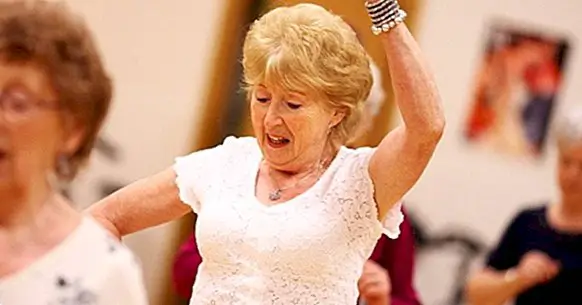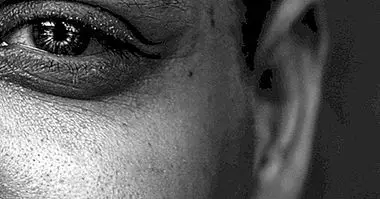Activities for the elderly: types, how to do them, and examples
Currently, active aging and the creation of policies for social participation and health protection for the elderly are some of the central issues in the debates on aging.
As part of this different activities for elderly people have been developed that, far from being a series of exercises specifically for the elderly, these are activities that are already known but adapted to the needs of this life cycle.
Continuing with this, we will see below some of activities that can be carried out with older adults, as well as the objectives pursued by each one.
- Related article: "The 3 phases of old age, and its physical and psychological changes"
Activities for the elderly and promotion of active aging
According to the World Health Organization (2002), active aging is the process of optimizing opportunities for health, participation and security, whose purpose is to improve the quality of life of people as they get older . Its objective is to enhance physical, social and mental well-being throughout the life cycle, while encouraging participation in the community in accordance with personal needs, desires and abilities.
In this sense, the socio-educational process related to active aging can only be carried out if it is based on collaboration, participation and detection of the needs of the elderly themselves. This is, considering his baggage of experiences, his concerns, life stories and personal biography .
The above can be favored from two large groups of activities, such as the following (Bermejo, 2010):
- Activities of a transversal nature, that promote active aging and favor autonomy ; It can include cultural and scientific and intergenerational programs.
- Instrumental activities, what includes the manipulation of information and communication technologies , as well as different technological products.
These activities can be developed in many places and institutions, as long as they meet the minimum requirements, such as space, furniture, tools and materials necessary for each activity, and human resources trained to direct them.
So, activities for the elderly can be carried out in civic or cultural centers , health centers, associations, universities, public squares, etc.
- Maybe you're interested: "The 4 psychological changes in old age (memory, attention, intelligence, creativity)"
How to plan its realization?
The planning of each activity can be done through practical guides, cards or tables, where the following elements are explained: the justification of the activity, the objectives, the contents , the strategies or particular activities, the necessary materials, the organizational aspects, the evaluation and the bibliographic resources.
This type of planning allows each activity to be adapted to the specific needs of the elderly person or group to which they are directed. In this sense it is important that the activities consider the preferences of the participants and the context where they are developed. Finally identify and enhance the resources present .
From there the general objectives of the activities for older adults can be the following:
- Provide meaningful information for the well-being of the person and / or the group.
- Favor reflection and analysis processes about what can accompany your aging in the best way.
- Live experiences that help prevent dependency .
Types of activities and examples
As we said before, there are no specific activities for the elderly, rather it is about adapting already existing activities to the needs of the older adult or the group of older adults, so that they can favor the previous objectives.
So, any activity already known is valid and can be favorably adapted if the detection of motives and needs of the elderly person is prioritized . In line with this, the activities can be planned in accordance with the three main objectives linked to active aging: promoting physical well-being, strengthening cognitive and emotional well-being, and fostering socio-relational well-being.
1. Physical well-being
One of the important aspects is to procure physical well-being. This can be favored from two main areas: nutrition and physical exercise.In the case of physical exercise, the activities have the objective of favoring dynamic states of energy and vitality, which help the person to perform the usual daily tasks, as well as enjoy an active leisure, face excessive fatigue and finally prevent the development of diseases related to sedentary lifestyle .
The activities can be developed to favor the following elements: cardiorespiratory endurance, muscular endurance, flexibility and balance, motor coordination, body composition, among others. To work this there are many activities, for example:
- Rhythmic gymnastics .
- Relaxation and stretching techniques.
- Sports like basketball or volleyball.
- Expressive rhythmic activities such as dance.
- Outdoor work like aerobics or pilates.
- Swimming with joint mobility exercises.
2. Emotional psychic-cognitive well-being
This item includes a series of strategies for promote brain plasticity and cognitive functions . This can be done precisely through cognitive training, which includes techniques for handling information such as the following:
- Teaching relaxation .
- Training attention and concentration, through selection of relevant information (selective attention), or, perform more than one task simultaneously (divided attention) and finally activities that require long periods of concentration (sustained attention).
- Exercises of abstract reasoning and verbal fluency.
- Sorting, sorting and classification tasks of the information.
- Activities to solve problems at different levels of difficulty.
- Activities that favor curiosity and creativity .
On the other hand, and in relation to the next point, there is emotional training, the strengthening of self-esteem and the development of skills necessary for assertive communication .
In the same sense is the prevention of depression and other discomforts sometimes associated with old age. This can be worked through the direct accompaniment of the person in psychotherapy, but also in group sessions where experiences are exchanged. Likewise it can be worked through group or individual simulation of situations where different emotions are triggered.
3. Socio-relational well-being
These activities have the objective of favoring cordial relations, maintaining social contact and increasing interpersonal links. Help counteract feelings of loneliness and to prevent discomforts related to this life cycle. They can also strengthen socioadaptive skills.
Some examples of the activities that can be carried out in this dimension are the following:
- Encourage the creation of groups of belonging according to common interests, and perform board games or other leisure and recreation activities .
- Practical cooking workshops, which includes the distribution of tasks for planning menus and shopping at nearby stores.
- Group visits to stores or exhibitions .
- Make cineforum, that is, see and comment on films that deal with topics of relevance according to their preferences and needs.
- Talks where possible share practical information about the environment and the resources it offers.
- Identify relevant content and initiatives to improve on the information that has been shared.
Bibliographic references:
- Bermejo, L. (2010). Active Aging and Socioeducational Activities. Good practice guide. Editorial Panamericana Medical: Madrid.
- Fernández, F, Carral, J. M. and Pérez, V. (2001). The prescription of physical exercise for older people. Normative values of physical condition. International Review of Medicine and Science of Physical Activity and Sport, 1 (2): 136-154.
- Limon, M.A (2011). Active aging and improvement of the quality of life in older adults. Journal of Psychology and Education, 6: 225-238.
- World Health Organization (2002). Active aging: a political framework. Spanish Journal of Geriatrics and Gerontology, 37 (2): 74-105.



















